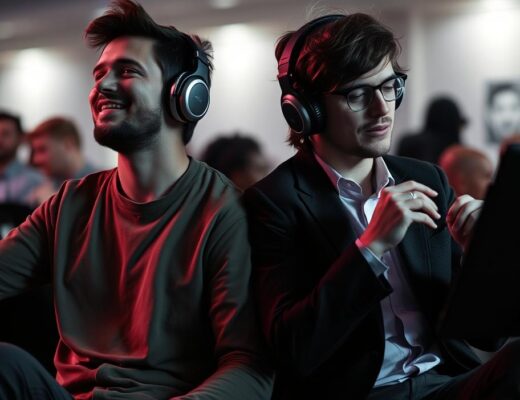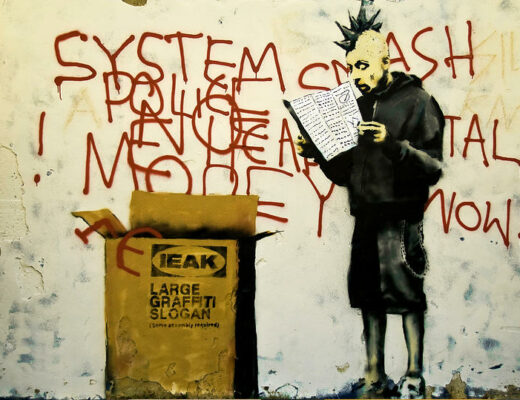Following the pandemic, which gave way to an equally as economically detrimental cost-of-living crisis, plenty of us are doing whatever it takes to get by, and musicians are no exception. Times are tough, and it’s even harder to get music fans to feign enthusiasm for new music; the collective sense of ennui is practically aurally impenetrable, which is making artists increasingly reliant on their ‘super fans’ who would spare no expense to engage in a meet-and-greet experience with their icons.
After reading the sullen and begrudging interview Doyle from the Misfits gave on the necessity of charging fans for meet-and-greets to make ends meet after fans “stole his music”, I couldn’t help but draw the parallels between the swathes of people becoming OnlyFans creators and the vast increase of artists charging for the pleasure of meeting them
In December 2019, there were 100,000 creators on OnlyFans. Fast forward to 2023, and there are 2.1 million content creators, and that is only the tip of the ‘Subscribe to Me’ iceberg. A business article in TIME dubbed the business model as the future of working culture with the rise in platforms such as Twitch, Patreon and SubStack.
As many traditional modes of work are unable to match the rates of pay for people talented, engaging, or attractive enough to sell subscriptions, there is absolutely no shame in adapting to economically survive, and running in the parallel lines between artists charging extortionate fees to share the same air with them and people taking to OnlyFans to fund their existence is by no means an attempt to throw shade at the latter.
The Rise and Controversy of the Meet-And-Greet Experience
In 2019, MTV documented how paid meet-and-greets have become a staple of gig experiences; even with the significant jump in ticket pricing, artists and their record labels are still mercenarily wanting to bleed more out of devout followers. Depending on the VIP experience in question, well-funded fans can get the chance to watch the artist soundcheck, take home exclusive merch, take a selfie, and briefly chat with the artist. But the monetisation of fan interactions doesn’t sit well with everyone.
One of the loudest voices in the chorus against the commodification of interacting with artists has been Matt Healy from The 1975. When questioning the motivation behind the priced interaction packaging, he delivered a blow to the major labels which have normalised the experience, adding more elements of exhaustion to the touring experience. It’s a fair point, although not one which excuses his recent racist downfall!
Members of the pop-punk outfit The Maine have also commented on the phenomenon, stating that it is hard to turn down the money which can be on the table from the cost of a handshake, but they are standing firm in their view that music should never be about your position of monetary privilege. Funnily enough, I want to go and buy all their records now.
Fans have also noted that the more you love an artist, the harder it is to refuse meet-and-great packages. But plenty of people are still arguing in favour of the experiences, including the tour manager, Emmy Levine, who believes the pricing of them is fair when considering the overlooked costs of touring. Apparently, when setting the pricing models for meet-and-greets, there was no other option than charging hundreds of dollars, in addition to the cost of a ticket, which can easily reach three figures alone. I would be inclined to believe her if it wasn’t for the artists who get by just fine without putting a premium price on a social interaction.
There’s a reason why paid meet-and-greets were banned by the founder of the Warped Tour festival when he established it in 1995. Kevin Lyman rightly believes that the minute bands charge to meet fans is the moment the interaction becomes nothing more than a transaction. He recognised that even if paid VIP experiences would be immediately more financially beneficial for bands, in the long-term, it’s only going to warp the artist-fan dynamic and potentially leave fans less inclined to show their support in the future when it finally sinks in that it is preposterous to pay money to meet someone and experience a meaningless exchange.
Some artists are getting inventive with their meet-and-greet incentives in a way which doesn’t completely diminish the interaction. Take LANY who have been in the habit of randomly selecting 15 – 20 of their fans to watch the soundcheck and hang out with the band as one of the better examples. Their innovative approach to adapting to their growing popularity which removed the plausibility of hanging around with fans after the show should set the standard for artists who are starting to take advantage of the artist-fan dynamics.
Meanwhile, the rapper G-Eazy wanted to find a way to fund bringing his barber on the road with him, so he allowed his fans to fund it by charging them excessive fees to have the same haircut as him and Incubus is charging $10k to go backstage with them. EVEN with the inflated cost of touring, there’s no way that is justifiable. And it may sound like a nice gesture for Disturbed to distribute some of their VIP revenues to charity, but what is the point in taking the money of the fans in the first place?! Extortion is extortion. It is no less nefarious if the perpetrator is your favourite artist.
–
If you want a few ideas on how to increase your revenue streams without extorting your fans via meet-and-greets, read our blog on the value of super fans.
Article by Amelia Vandergast




No Comments